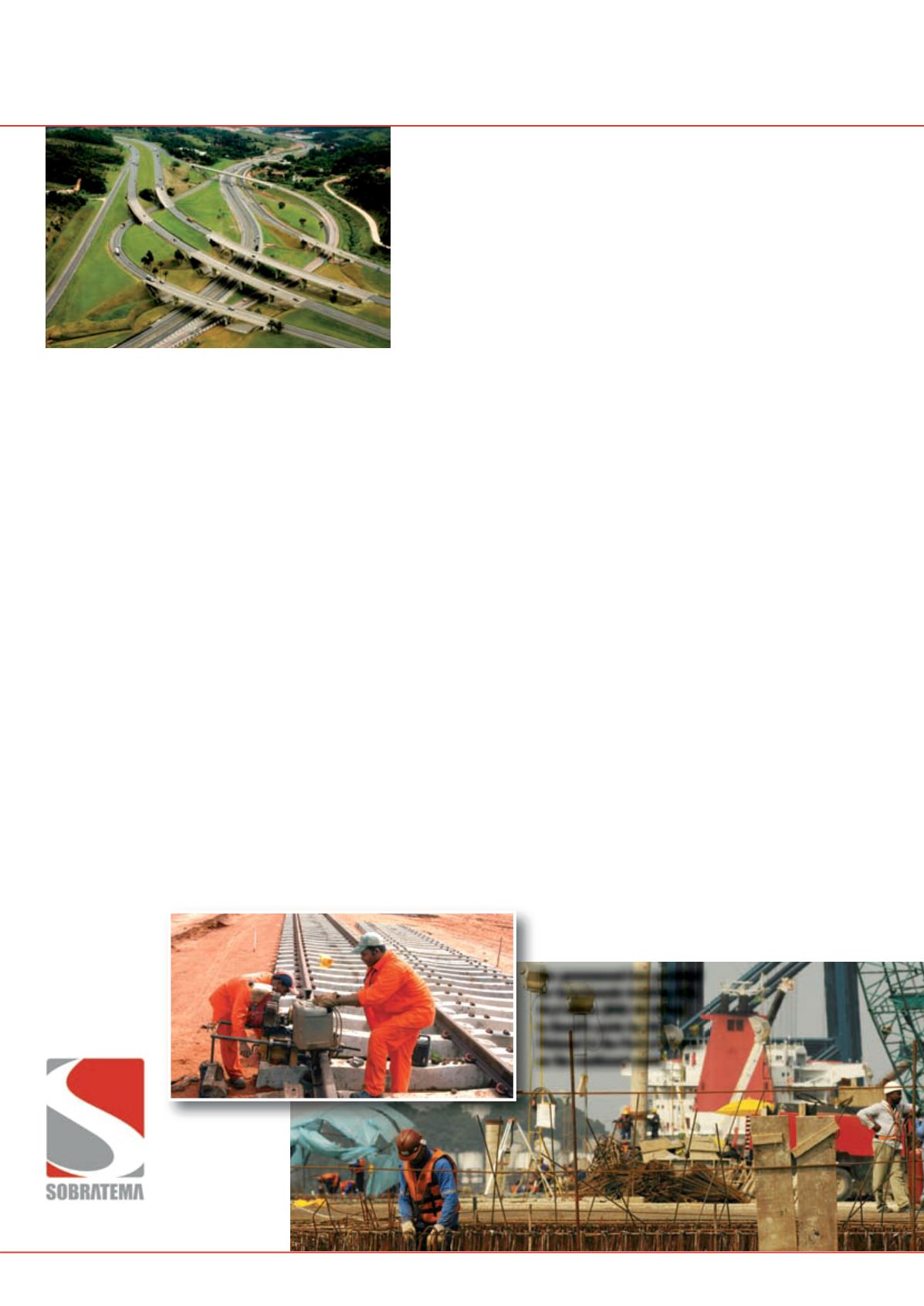
59
july-august 2013
international
construction
Investing in logistics
ASSOCIATIONS
I
n August 2012, Brazilian president Dilma Rousseff launched
the country’s Investment Programme in Logistics (IPL). It
proposes funding of BRL 133 billion (US$ 61 billion), of
which BRL 42 billion (US$ 19 billion) is for nine stretches of
highways and BRL 91 billion (US$ 42 billion) is for 10,000 km
of new railway lines in 12 sections.
The programme’s goal is to increase public and private investment
in transport infrastructure and promote the integration of
highways, railways, ports and airports. Reducing costs and
increasing transport capacity are key aims, as well as promoting
efficiency and increasing the country’s competitiveness.
The BRL 42 billion (US$ 19 billion) highway investment is
planned as a series of 30 years concessions, of which BRL 23.5
billion (US$ 11 billion) must be made in the first five years. The
BRL 91 billion (US$ 42 billion) rail investment is planned as 35
year concessions, of which BRL 56 billion (US$ 26 billion) must
be made in the first five years.
A government agency, Empresa de Planejamento e Logística,
has been created to plan and monitor projects and promote the
integration of infrastructure in Brazil.
As far as rail is concerned, the government would like to see
public-private partnerships take on the 12 projects, which span
the country.
There are two phases of development – the first comprises
2,600 km of rail construction, including sections of the Ferroanel
The Brazilian government is addressing transport
bottlenecks that are hindering the country’s growth,
according to the
Brazilian Association of Technology
for Equipment and Maintenance (SOBRATEMA)
Investing in logistics
Junctions on the Anhanguera to Bandeirantes toll road. The government
is investing BRL 42 billion (US$ 19 billion) on nine stretches of toll road.
network to be built around the metropolitan area of São Paulo, a
new rail line to the Port of Santos on the southeast coast and a rail
link between Lucas do Rio Verde and Uruaçu in central Brazil.
Contracts for these and other projects from the first phase are
scheduled to be awarded by July this year.
Contracts for the second phase of projects, which include a
rail link between the city of Belo Horizonte in the southeast to
Salvador on the northeast, are due to be signed between July and
September.
Meanwhile, the nine stretches of highway that the government
aims to build cover 7,500 km and are planned as toll roads. The
new highways and the 10,000 km of railways are expected to be
completed by the end of 2018.
Port investment
Additional investment is also planned to make Brazil’s ports more
competitive. The government plans investments totalling BRL
54.2 billion (US$ 25 billion) in this sector by 2017, and has also
drawn up new regulations promoting the integration of rail, road
and water transport.
The funds will benefit more than 20 ports in the south, southeast
and northeast. The government is also open to the possibility of
creating new private ports in the country.
The Brazilian government is keen to attract private investment
for transport infrastructure, and the investments it has planned
should address the bottlenecks that are hindering the country’s
growth. This of course should be positivie for the country’s
construction sector, and the wider economy as a whole.
iC
A new rail line
to the Port of
Santos is being
constructed
as part of a
BRL 91 billion
(US$ 42 billion)
investment in
the country’s rail
network.
The government has provided
for investments totalling BRL
54.2 billion (US$ 25 billion)
in Brazil’s ports by 2017.
Pictured is the Port of Santos
on the southeast coast.


